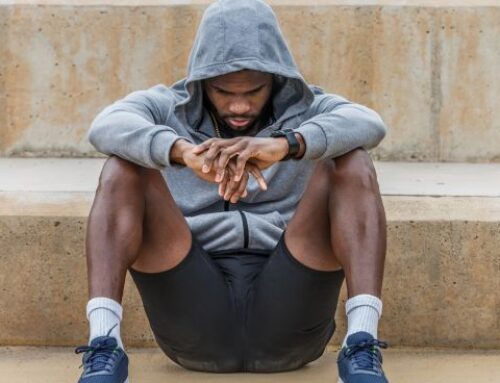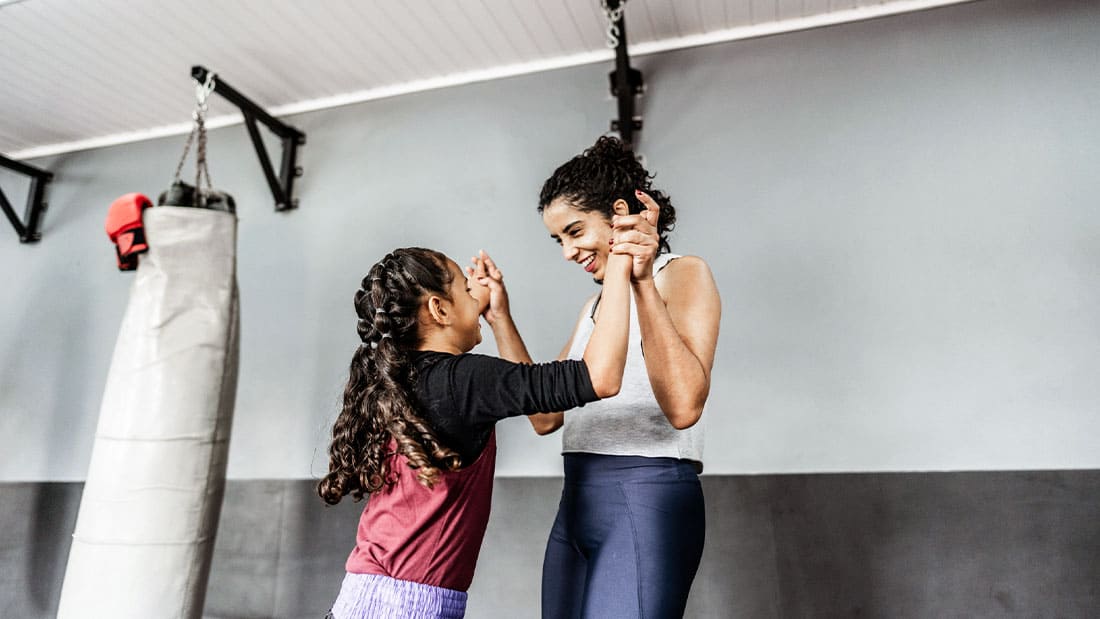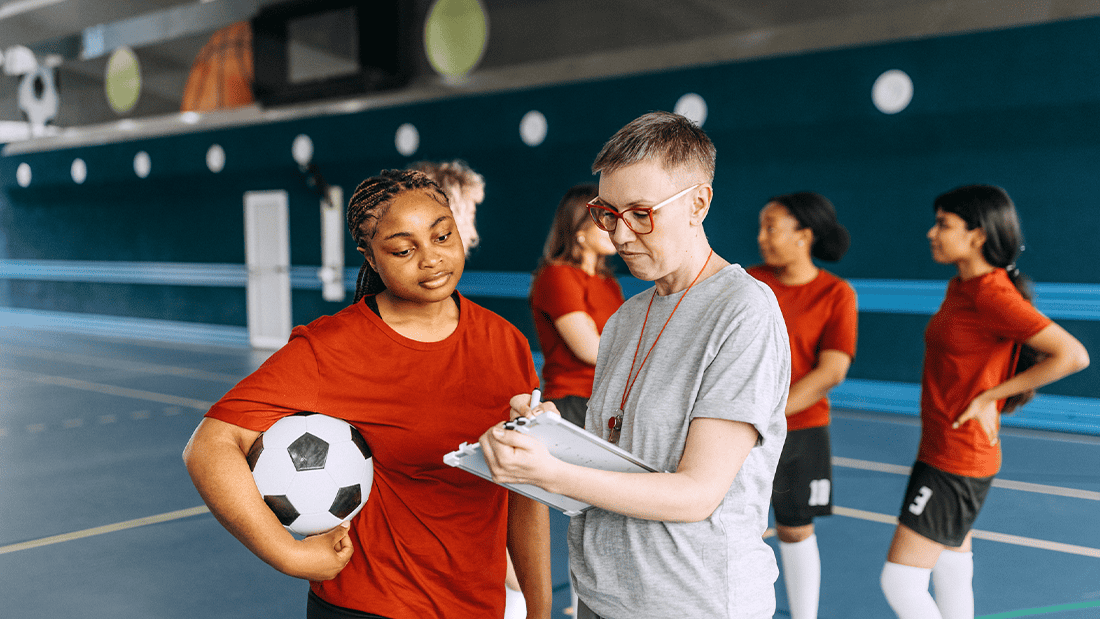3 Exercises to Build Mental Toughness That Don’t Break Down the Body
Strength and conditioning is about enhancing the performance capabilities of athletes.
When programmed correctly, it also instills discipline, builds healthy habits and assists with injury prevention. But there’s another component many strength and conditioning and sport coaches alike like to develop during training—mental toughness.
They like to build grit and perseverance. They want athletes who don’t quit when things get hard. They want to see how deep someone’s willing to venture into the “pain cave.” And there’s no doubt that mental toughness is a key component of success for both the individual athlete and the team at large. There are going to be points during competition when things get really tough, and how are you going to respond to that?
However, the methods used to build mental toughness are often highly questionable and can be to the detriment of other athletic qualities. Traditionally, huge quantities of gut-wrenching drills like Sideline Gassers and Burpees, or weight room workouts that require an absurd amount of volume to be achieved in a given time, have been top choices for coaches. Such methods sacrifice the athlete’s body and overall performance in the pursuit of mental toughness.
So, what can we do instead? What can help an athlete push past mental barriers and help them realize they’re stronger and tougher than they once thought?
Every time a training plan is developed, the risk-to-reward paradigm of exercise selection is paramount. What is the reason a particular exercise has been selected? Then, can something equally if not more effective be done that’s safer for the athlete?
In the case of developing mental toughness, no single movement is essential. That means Kipping Pull-Ups, high-rep set Olympic lifts, Burpees until you barf, endless Box Jumps, and so many other unnecessary exercises can be replaced with something more intelligent.
When aiming to test an athlete’s mental fortitude, the aim should be to provide something that’s difficult and allows them to truly challenge themselves, but in an environment where they can fail safely. Here are three types of exercises that build mental toughness without breaking down the body.
1. Loaded Carries
I will preface this by saying that any movement can be made unsafe if abused. Thus, ensure that when performing loaded carries, the spine remains neutral and the shoulders remain over the top of the hips.
What is amazing about loaded carries is they can be done for time and or distance and build work capacity, strength, endurance or simply provide an alternative method of conditioning. Loaded carries work on grip strength, core stability and postural control depending on the way in which they’re implemented. Some variations include bilateral and unilateral dumbbell Farmer’s Walks, Trap Bar Carries, kettlebell rack or bottoms-up position carries, and even plate carries (executed by pinching the weight plate between the fingers and thumb).
An excellent way to push athletes with this movement is to have them walk longer distances with a weight that is approximately 50-75% of their body weight and require them to maintain postural integrity. Pure strength will only get an athlete so far with this exercise, mental toughness will have to do the rest. What’s even nicer here is that when the load becomes too fatiguing, the athlete can safely lower it to the ground with no spotters needed. It might take some tweaking to find the exact load and parameters you’d like to use (walk for distance or walk for time? how long or how far? or walk until failure and make it competitive?), but done right, loaded carries will reveal and develop grit.
2. Isometrics
Another fantastic method for building mental toughness in athletes is the use of isometric movements. Isometrics are exercises where the concentric muscle force is equal to the resistive force. Thus, the athlete is in a static position for the duration of the movement.
Some of my favorite options include Ninety-Degree Wall Sits, Split Squat holds, Pallof Position Band Holds, Chin Above the Bar and hard-style Plank variations. These can be done loaded or with body weight alone to develop strength and greater levels of resiliency. The method in which I commonly employ these with my athletes is to pair each person with a partner, and have one do something such as a row machine interval while the other holds an isometric like a wall sit. This not only forces the athlete to be strong and withstand a bit of discomfort, but also build some camaraderie with their teammates.
3. Sled Work
Similar to loaded carries, sled variations are versatile in that they can be adapted to nearly any goal a coach or athlete has in mind. Obviously proper biomechanics are important here as well, as there is still inherent risk for injury if improperly executed (e.g., Achilles tendon strain for those who load it too heavy).
With that being said, failure during this exercise simply constitutes being unable to continue pushing, pulling or dragging the sled; a relatively low risk. These movements can be done for speed, distance, time or as relay finishers amongst teammates, which is my personal favorite. A little friendly competition goes a long way in building team culture, especially when it’s fun. I have found great success with implementing sled pushes at the end of workouts, and breaking teams into groups to race against each other for some competition. It is energy that can only be rivaled by game day, doing wonders for the psyche of traditional training settings.
What’s more, sled variations are about as honest of an exercise as you can get. Work equals force times distance, meaning that no matter how you slice it, the athlete needs to get the sled from point A to point B. There’s no skipping reps or shallow ranges of motion, the work must be done. Sled work is also great for recovery days as it has little eccentric muscle action, making it much less likely to beat your athletes up and make them sore.
“Building mental toughness” is often used as an excuse for sloppy, dangerous programming. There’s no doubt mental toughness is important for athletes, but let’s be smart about how we build it. Always ask yourself whether there is a better option that can be done to yield optimal results at a lower risk. Building mental toughness doesn’t have to come at the cost of safety or put athletes in harm’s way. Train hard, train tough, but most importantly, train smart!
Photo Credit: PeopleImages/iStock
READ MORE:
RECOMMENDED FOR YOU
MOST POPULAR
3 Exercises to Build Mental Toughness That Don’t Break Down the Body
Strength and conditioning is about enhancing the performance capabilities of athletes.
When programmed correctly, it also instills discipline, builds healthy habits and assists with injury prevention. But there’s another component many strength and conditioning and sport coaches alike like to develop during training—mental toughness.
They like to build grit and perseverance. They want athletes who don’t quit when things get hard. They want to see how deep someone’s willing to venture into the “pain cave.” And there’s no doubt that mental toughness is a key component of success for both the individual athlete and the team at large. There are going to be points during competition when things get really tough, and how are you going to respond to that?
However, the methods used to build mental toughness are often highly questionable and can be to the detriment of other athletic qualities. Traditionally, huge quantities of gut-wrenching drills like Sideline Gassers and Burpees, or weight room workouts that require an absurd amount of volume to be achieved in a given time, have been top choices for coaches. Such methods sacrifice the athlete’s body and overall performance in the pursuit of mental toughness.
So, what can we do instead? What can help an athlete push past mental barriers and help them realize they’re stronger and tougher than they once thought?
Every time a training plan is developed, the risk-to-reward paradigm of exercise selection is paramount. What is the reason a particular exercise has been selected? Then, can something equally if not more effective be done that’s safer for the athlete?
In the case of developing mental toughness, no single movement is essential. That means Kipping Pull-Ups, high-rep set Olympic lifts, Burpees until you barf, endless Box Jumps, and so many other unnecessary exercises can be replaced with something more intelligent.
When aiming to test an athlete’s mental fortitude, the aim should be to provide something that’s difficult and allows them to truly challenge themselves, but in an environment where they can fail safely. Here are three types of exercises that build mental toughness without breaking down the body.
1. Loaded Carries
I will preface this by saying that any movement can be made unsafe if abused. Thus, ensure that when performing loaded carries, the spine remains neutral and the shoulders remain over the top of the hips.
What is amazing about loaded carries is they can be done for time and or distance and build work capacity, strength, endurance or simply provide an alternative method of conditioning. Loaded carries work on grip strength, core stability and postural control depending on the way in which they’re implemented. Some variations include bilateral and unilateral dumbbell Farmer’s Walks, Trap Bar Carries, kettlebell rack or bottoms-up position carries, and even plate carries (executed by pinching the weight plate between the fingers and thumb).
An excellent way to push athletes with this movement is to have them walk longer distances with a weight that is approximately 50-75% of their body weight and require them to maintain postural integrity. Pure strength will only get an athlete so far with this exercise, mental toughness will have to do the rest. What’s even nicer here is that when the load becomes too fatiguing, the athlete can safely lower it to the ground with no spotters needed. It might take some tweaking to find the exact load and parameters you’d like to use (walk for distance or walk for time? how long or how far? or walk until failure and make it competitive?), but done right, loaded carries will reveal and develop grit.
2. Isometrics
Another fantastic method for building mental toughness in athletes is the use of isometric movements. Isometrics are exercises where the concentric muscle force is equal to the resistive force. Thus, the athlete is in a static position for the duration of the movement.
Some of my favorite options include Ninety-Degree Wall Sits, Split Squat holds, Pallof Position Band Holds, Chin Above the Bar and hard-style Plank variations. These can be done loaded or with body weight alone to develop strength and greater levels of resiliency. The method in which I commonly employ these with my athletes is to pair each person with a partner, and have one do something such as a row machine interval while the other holds an isometric like a wall sit. This not only forces the athlete to be strong and withstand a bit of discomfort, but also build some camaraderie with their teammates.
3. Sled Work
Similar to loaded carries, sled variations are versatile in that they can be adapted to nearly any goal a coach or athlete has in mind. Obviously proper biomechanics are important here as well, as there is still inherent risk for injury if improperly executed (e.g., Achilles tendon strain for those who load it too heavy).
With that being said, failure during this exercise simply constitutes being unable to continue pushing, pulling or dragging the sled; a relatively low risk. These movements can be done for speed, distance, time or as relay finishers amongst teammates, which is my personal favorite. A little friendly competition goes a long way in building team culture, especially when it’s fun. I have found great success with implementing sled pushes at the end of workouts, and breaking teams into groups to race against each other for some competition. It is energy that can only be rivaled by game day, doing wonders for the psyche of traditional training settings.
What’s more, sled variations are about as honest of an exercise as you can get. Work equals force times distance, meaning that no matter how you slice it, the athlete needs to get the sled from point A to point B. There’s no skipping reps or shallow ranges of motion, the work must be done. Sled work is also great for recovery days as it has little eccentric muscle action, making it much less likely to beat your athletes up and make them sore.
“Building mental toughness” is often used as an excuse for sloppy, dangerous programming. There’s no doubt mental toughness is important for athletes, but let’s be smart about how we build it. Always ask yourself whether there is a better option that can be done to yield optimal results at a lower risk. Building mental toughness doesn’t have to come at the cost of safety or put athletes in harm’s way. Train hard, train tough, but most importantly, train smart!
Photo Credit: PeopleImages/iStock
READ MORE:










